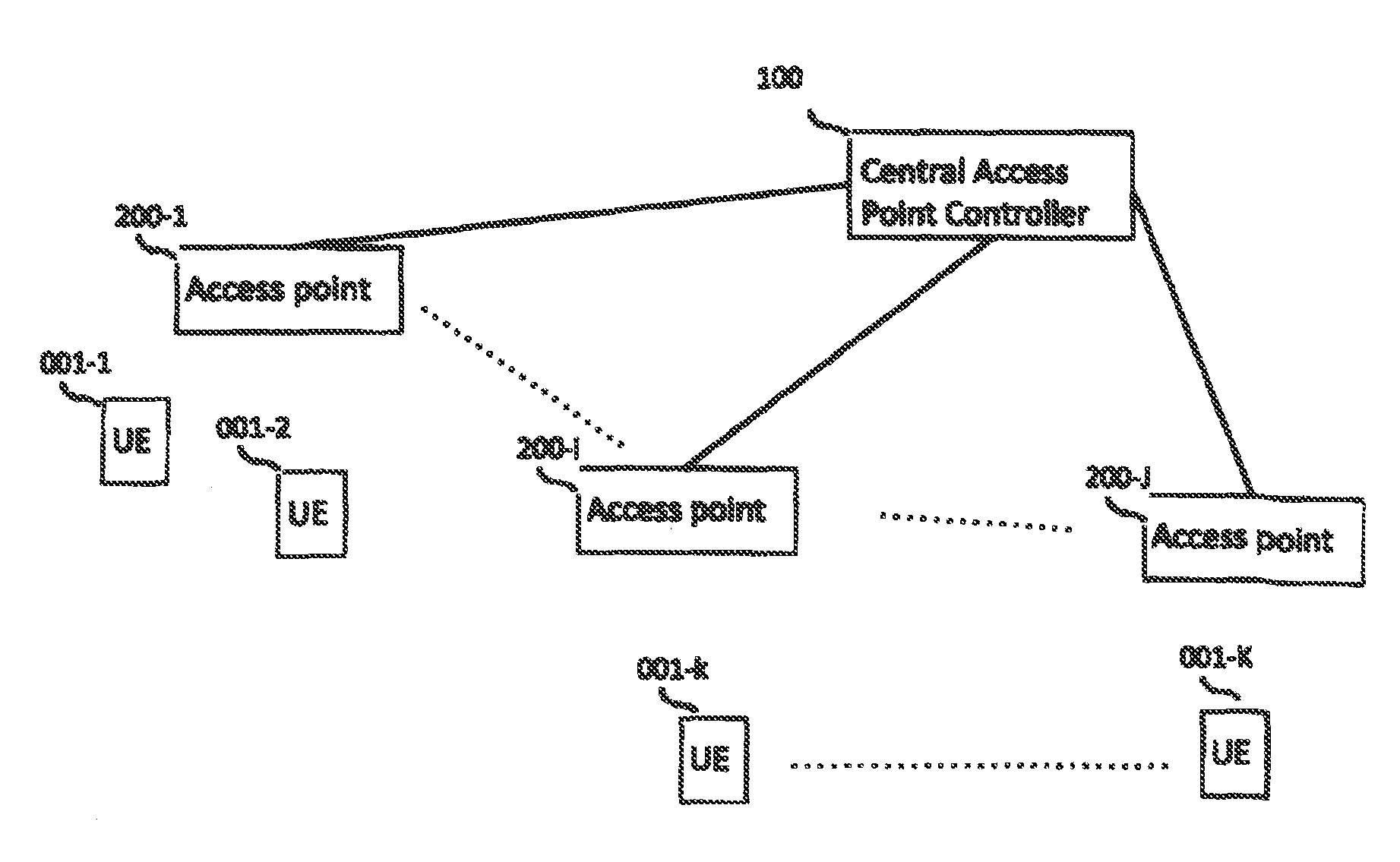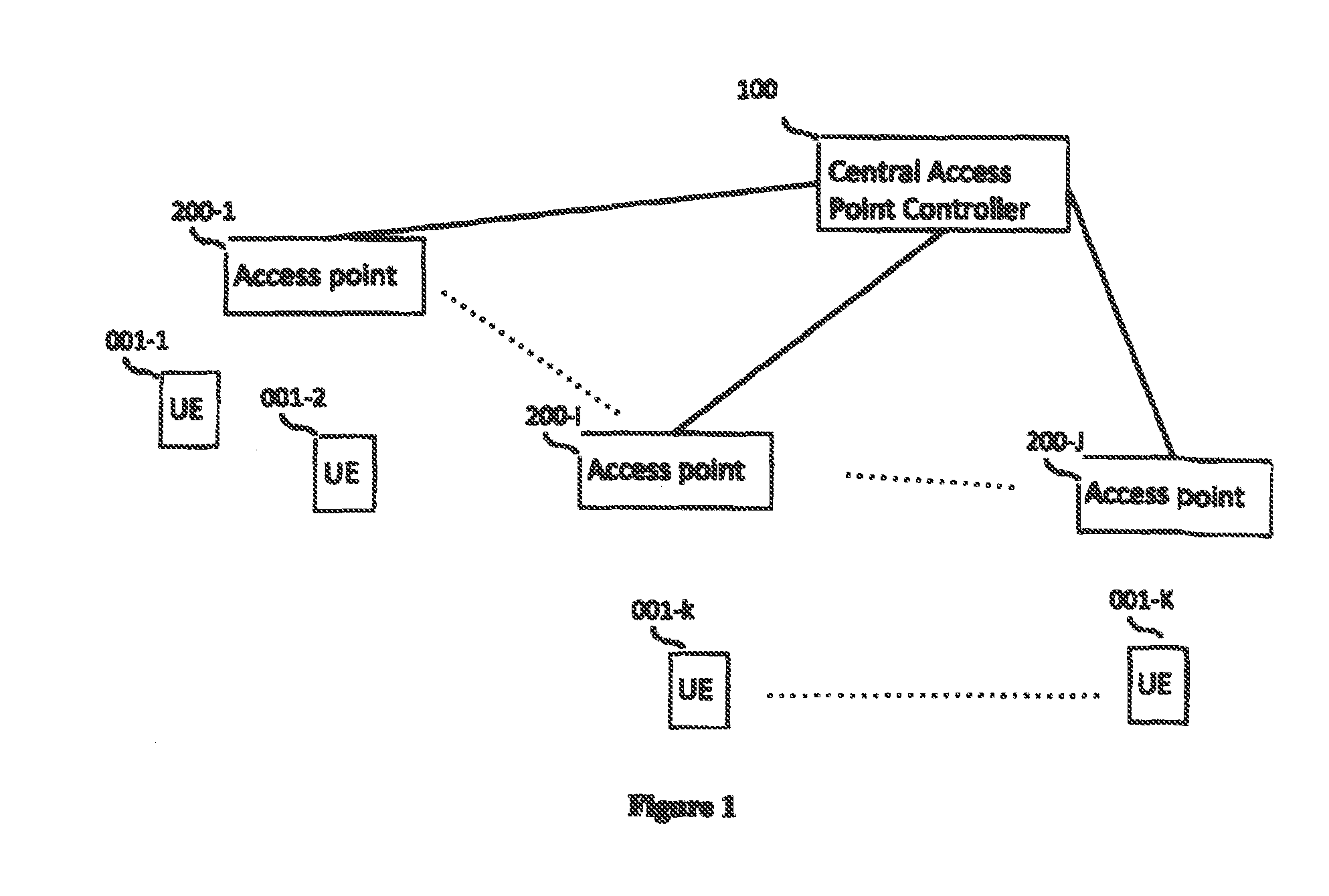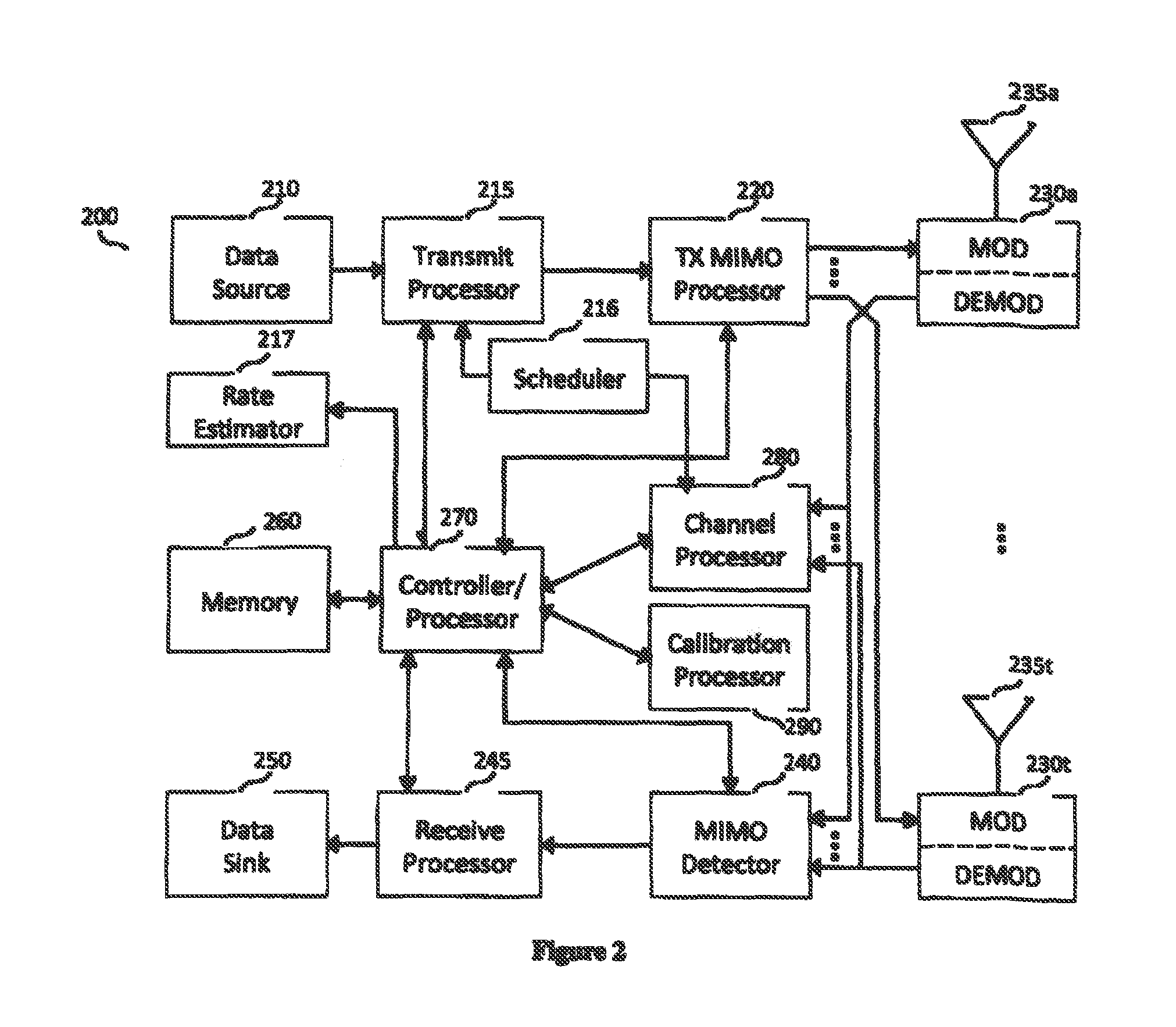Method and apparatus for scheduling, load balancing, and pilot-assignments in reciprocity-based MIMO cellular deployments
- Summary
- Abstract
- Description
- Claims
- Application Information
AI Technical Summary
Benefits of technology
Problems solved by technology
Method used
Image
Examples
Embodiment Construction
[0043]Embodiments of the invention include techniques for load balancing and scheduling using a combination of processing and information shared between a central controller and a set of APs.
[0044]Embodiments of the invention include methods and apparatuses that allow scheduling, load balancing, and pilot-assignments in reciprocity-based single-user and multiuser MIIVIO cellular deployments, including such deployment with large antenna arrays and a large number of users. The disclosed scheduling, load balancing and pilot-assignments techniques can be used for providing efficient operation for a variety of wireless networks, including, but not limited to, macro cells, small cells, heterogeneous network deployments.
[0045]Embodiments of the invention consider the joint use of access points (APs) and a central controller (e.g., processor) coupled to these APs for performing load balancing and scheduling over the area served by the APs. Embodiments of the invention leverage an efficient ...
PUM
 Login to View More
Login to View More Abstract
Description
Claims
Application Information
 Login to View More
Login to View More - R&D
- Intellectual Property
- Life Sciences
- Materials
- Tech Scout
- Unparalleled Data Quality
- Higher Quality Content
- 60% Fewer Hallucinations
Browse by: Latest US Patents, China's latest patents, Technical Efficacy Thesaurus, Application Domain, Technology Topic, Popular Technical Reports.
© 2025 PatSnap. All rights reserved.Legal|Privacy policy|Modern Slavery Act Transparency Statement|Sitemap|About US| Contact US: help@patsnap.com



